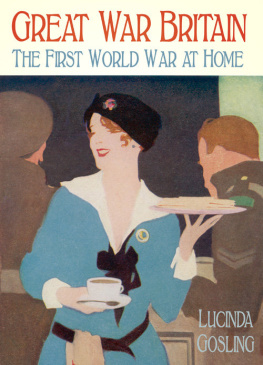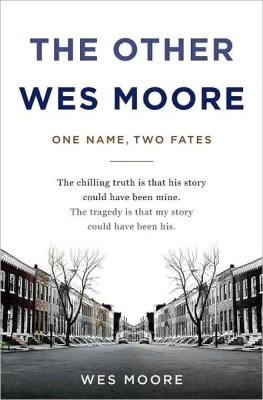Lucinda Moore - Animals in the Great War
Here you can read online Lucinda Moore - Animals in the Great War full text of the book (entire story) in english for free. Download pdf and epub, get meaning, cover and reviews about this ebook. year: 2017, publisher: Pen & Sword Books Limited, genre: Non-fiction. Description of the work, (preface) as well as reviews are available. Best literature library LitArk.com created for fans of good reading and offers a wide selection of genres:
Romance novel
Science fiction
Adventure
Detective
Science
History
Home and family
Prose
Art
Politics
Computer
Non-fiction
Religion
Business
Children
Humor
Choose a favorite category and find really read worthwhile books. Enjoy immersion in the world of imagination, feel the emotions of the characters or learn something new for yourself, make an fascinating discovery.
- Book:Animals in the Great War
- Author:
- Publisher:Pen & Sword Books Limited
- Genre:
- Year:2017
- Rating:4 / 5
- Favourites:Add to favourites
- Your mark:
- 80
- 1
- 2
- 3
- 4
- 5
Animals in the Great War: summary, description and annotation
We offer to read an annotation, description, summary or preface (depends on what the author of the book "Animals in the Great War" wrote himself). If you haven't found the necessary information about the book — write in the comments, we will try to find it.
Animals in the Great War — read online for free the complete book (whole text) full work
Below is the text of the book, divided by pages. System saving the place of the last page read, allows you to conveniently read the book "Animals in the Great War" online for free, without having to search again every time where you left off. Put a bookmark, and you can go to the page where you finished reading at any time.
Font size:
Interval:
Bookmark:
IMAGES OF WAR
ANIMALS IN THE GREAT WAR
RARE PHOTOGRAPHS FROM WARTIME ARCHIVES
IMAGES OF WAR
ANIMALS IN THE GREAT WAR
RARE PHOTOGRAPHS FROM WARTIME ARCHIVES
LUCINDA MOORE

First published in Great Britain in 2017 by
PEN & SWORD MILITARY
an imprint of
Pen and Sword Books Ltd
47 Church Street
Barnsley
South Yorkshire S70 2AS
Copyright Lucinda Moore, 2017
ISBN 978 1 47386 211 1
eISBN 978 147386 213 5
Mobi ISBN 978 147386 212 8
The right of Lucinda Moore to be identified as the author of this work has been asserted by her in accordance with the Copyright, Designs and Patents Act 1988.
A CIP record for this book is available from the British Library.
All rights reserved. No part of this book may be reproduced or transmitted in any form or by any means, electronic or mechanical including photocopying, recording or by any information storage and retrieval system, without permission from the Publisher in writing.
Pen & Sword Books Ltd incorporates the imprints of Pen & Sword Archaeology, Atlas, Aviation, Battleground, Discovery, Family History, History, Maritime, Military, Naval, Politics, Railways, Select, Social History, Transport, True Crime, and Claymore Press, Frontline Books, Leo Cooper, Praetorian Press, Remember When, Seaforth Publishing and Wharncliffe.
For a complete list of Pen and Sword titles please contact
Pen and Sword Books Limited
47 Church Street, Barnsley, South Yorkshire, S70 2AS, England
E-mail:
Website: www.pen-and-sword.co.uk
Contents
Introduction
Though in no way intended as a complete history of animals in the Great War, this book aims to throw a spotlight on the many ways in which creatures, great and small, were affected by the First World War, and also the ways in which those creatures contributed to the war effort. Their stories are told through the lens of original archival material from the Mary Evans Picture Library, through privileged access to the lushly illustrated wartime periodicals and other publications from the era.

Rescue of Norah the bulldog mascot and the ships pets after the sinking of HMS King Edward VII in January 1916.
Chapter 1
Tails from the sea
As part of the theatre of war, the sea was a backdrop to a remarkable variety of animals, aquatic and otherwise. Through the visual material held in the Mary Evans Picture Library, the lesser known stories of these creatures who lived above and beneath the ocean waves can be told.
The depiction opposite by Italian artist Cyrus Cuneo in the childrens book Great Deeds of the Great War shows the rescue of the ships pets after the sinking of HMS King Edward VII in January 1916. The ship struck a drifting mine off the coast of Cape Wrath, Scotland, and was badly damaged in the explosion. Some crew members courageously risked their lives to round up the ships menagerie of pets as the vessel began to sink. Able Seaman Needham is pictured placing Norah the bulldog, the ships mascot, into a lifeboat that was already being lowered. Besides Norah, the ships two monkeys were rescued by Leading Seaman Wood; no mean feat, as they were reportedly in a state of considerable agitation after the explosion, and scampering about wildly. The ships parrot was not used to being manhandled, had to be set free, and was last seen heading in the direction of shore. The men hunted fruitlessly for the ships three cats as the vessel sank further into the water, though eventually two kittens were discovered. One had run into one of the ships guns, and could not be removed in time, but the other was caught by W.A. Wise, a member of the canteen staff, who thrust it into his jumper. With no time left to save his kit and his money, Wise put on a lifebelt and managed to swim free of the battleship before it sank. On being picked up by a boat, his first concern was for the kitten, which was none the worse off for its dip, and eventually accompanied Wise home to Ilford in Essex. The kitten was given the name Teddy, after the ship, though it never returned to sea after its adventures.
Norah was just one of many seadogs that served during the Great War. Peggy was the canine mascot of HMS Iron Duke , a dreadnought class battleship, and her presence was a considerable boost to morale for those on board, as these vignettes testify. Loaned by her owner for the duration of the war, Peggy soon became a favourite of the crew. Jumbo, another bulldog on board HMS Iron Duke , had been presented to Admiral Jellicoe by the actor Arthur Playfair, and was an inseparable companion of Peggys. Peter Shaw Barker in his 1933 book Animal War Heroes relates that Jumbo was very protective of Peggy when other dogs were about, and that he once attacked an Airdale belonging to Admiral Burney and chased it into the stern sheets of a picket boat where a fierce fight ensued. They were only separated with the help of sailors with mops. In due course, Peggy and Jumbo had a litter of five bulldog pups together. Peggys sense of mischief was evident in her great enjoyment at carrying off any loose items left on deck, and stashing them away in her kennel. She was an enthusiastic participant in the ships football team, whether on deck or on shore, and was not above invading the pitch when egged-on by spectators who were dissatisfied by the teams performance. In accordance with the agreed arrangement, Peggy returned to her owner in 1919 once the war was over. A portrait of Peggy was painted to sell in order to raise funds for St Bartholomews Hospital, a charitable cause she had personally supported before, when collecting at Harrods department store, accompanied by a nurse. In January 1920, it was decided that Peggy herself should be included in an auction sale to raise money for Barts, and so she became Lot 21, raising sixty guineas for the charity. The purchaser of Peggy generously presented her back to the delighted crew of HMS Iron Duke , by now based with the Mediterranean Fleet, who sent a destroyer to collect her; a privilege afforded to few dogs. Peggy spent the last two and half years of her life happily in the care of A. B Viney on board HMS Iron Duke , for which he received a certain sum for her keep. She would sleep alongside Viney, with him using her as a pillow. When Peggy died after a short illness in June 1923, she was given a sailors burial, and lowered over the side of the ship.
Old Bill, a wired-haired terrier, became the mascot of HMS Falmouth in rather unusual circumstances. In early August 1914, shortly after the outbreak of war, HMS Falmouth came across a fleet of five German fishing trawlers whilst on patrol in the North Sea. Acting on orders to take as prisoners any enemy crew, and to sink their vessels, four of the five ships were duly dispatched, with one old wooden boat left. After trying ineffectually to sink her with three rounds of shellfire, a boarding party attempted to blow her up using TNT. Though parts of the ship were thrown sky-high, the main body of the ship remained, and the decision was made to ram her, to prevent the derelict vessel being a hazard to shipping. After a few attempts, the ship was split clean in two, and to everyones surprise a terrier appeared on one of the still floating halves. Bruised and barking furiously, the dog was remarkably unscathed after the encounter, and a boat was immediately sent from HMS Falmouth to rescue him. The dog was wearing a chain collar and brass name plate, inscribed with his name Fritz, so in spite of being abandoned to his fate on the trawler, he must have originally had an owner who cared enough to give him his own engraved collar. Adopted as the mascot of HMS Falmouth , he was patriotically re-christened with Old Bill, no doubt in homage to the comic creation of the same name by Bruce Bairnsfather. Old Bill was on board the Falmouth for the sinking of the German cruiser Mainz , and was even wounded three times during the Battle of Jutland. The Falmouth was sunk in August 1916 by torpedoes, after a sustained attack from Zeppelins L11 and L31 and two U-boats. Old Bill was rescued along with the crew, and went to live at Plymouth Barracks, where he remained a popular pet, living to a ripe old age and eventually dying of natural causes.
Next pageFont size:
Interval:
Bookmark:
Similar books «Animals in the Great War»
Look at similar books to Animals in the Great War. We have selected literature similar in name and meaning in the hope of providing readers with more options to find new, interesting, not yet read works.
Discussion, reviews of the book Animals in the Great War and just readers' own opinions. Leave your comments, write what you think about the work, its meaning or the main characters. Specify what exactly you liked and what you didn't like, and why you think so.













